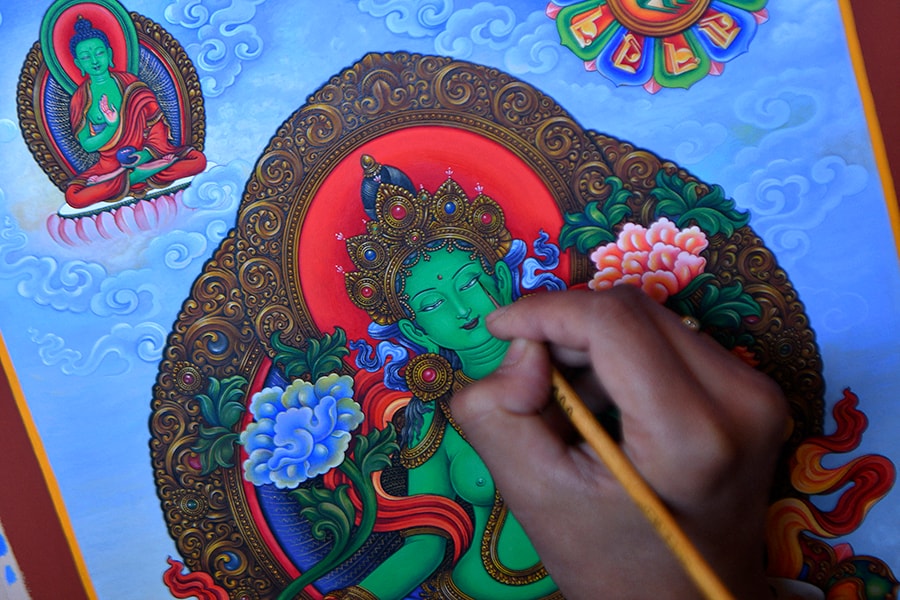
Nepal artist breathes life into sacred painting tradition
Paubha remains a common painting method in Nepal but the austere religious observances once followed by its artists have fallen out of practice
 Paubha artist Ujay Bajracharya works on his rendition of the Green Tara, a goddess of compassion revered by Buddhists and Hindus in the country, in Lalitpur on the outskirts of Kathmandu.
Image: Prakash Mathena/ AFP
Paubha artist Ujay Bajracharya works on his rendition of the Green Tara, a goddess of compassion revered by Buddhists and Hindus in the country, in Lalitpur on the outskirts of Kathmandu.
Image: Prakash Mathena/ AFP
With a shaved head and an empty stomach, artist Ujay Bajracharya dips his brush to line the eyes of the deity Tara as a soothing Buddhist hymn warbles in the background.
The 40-year-old is applying the final strokes to his paubha painting, a devotional art form known for its minute detail, intense colours and the strict purification rituals traditionally required of its practitioners.
It took three months for Bajracharya to complete his rendition of the Green Tara, a goddess of compassion revered by Buddhists and Hindus in Nepal.
Before work began, he shaved off his hair and clipped his nails, while a Buddhist priest blessed his canvas and selected a day auspicious enough for the artist to commence his labours.
Bajracharya woke up early each morning and did not eat until his day's work was over, adopting a strict vegetarian diet that also excluded garlic, tomatoes and onion when he broke his fast.







